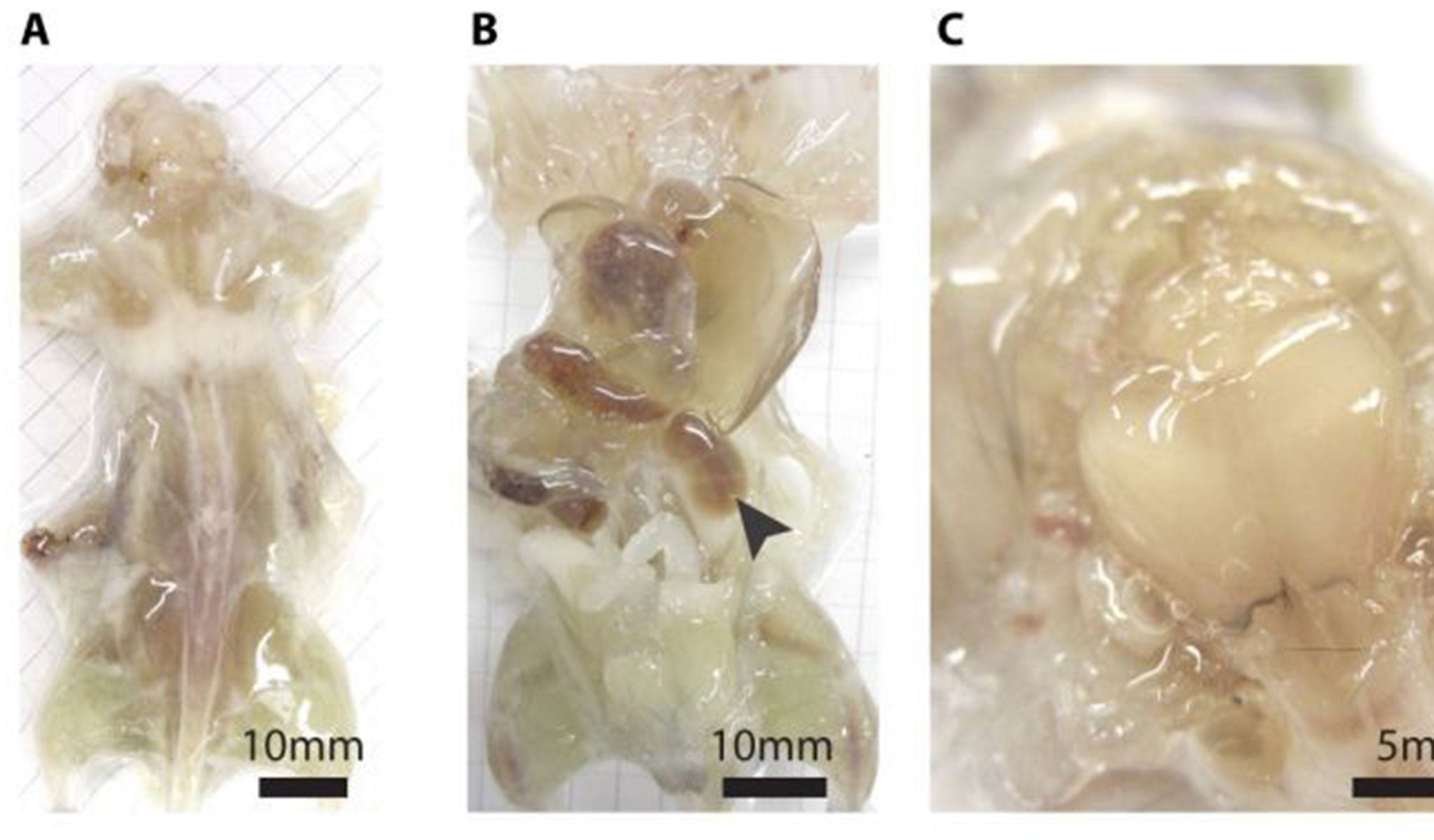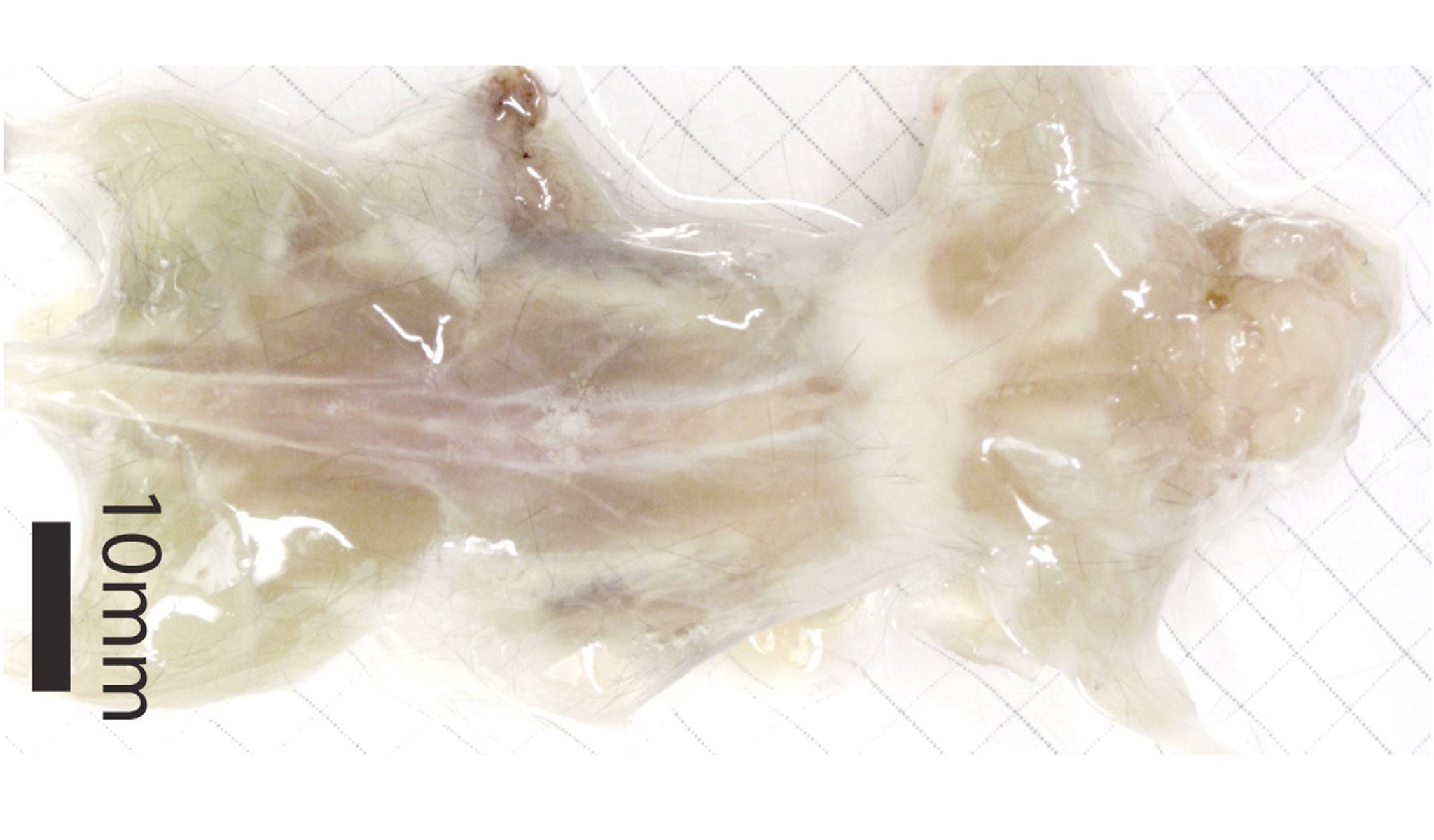Scientists create transparent mouse complete with see-through organs
Technique could be used to detect viruses and analyse human biopsy samples

Scientists have created see-through mice complete with transparent organs, in a new technique that could pave the way to a new generation of therapies for conditions ranging from autism to chronic pain.
Mice are frequently used in biomedical research because much of their basic biology is similar to humans, meaning they can be altered in ways that simulate human diseases.
The transparent mice are not alive however, and are currently being used for scientists researching fine details of anatomy.
Vivian Gradinaru, a senior author of the study at the California Institute of Technology, said the research could pave the way for a better understanding of brain-body interactions, more accurate clinical diagnoses and disease monitoring.
Before being treated with chemicals, the mice were euthanised and their skin removed. The team then pumped a series of chemicals through blood vessels, as well as other passages in the brain and spinal cord.
Some of the chemicals form a mesh to hold tissue in place, while others wash out fats that make tissue block light.

The results appear like a rodent-shaped block of gelatin with the organs held in place by connective tissue and a gel used in the procedure.
Researchers made their inner organs transparent, but not their bones. The process of making an entire mouse see-through takes up to two weeks.
Although scientists have been attempting to make organs transparent for decades, they have struggled to do this without damaging tissue.
The new work is the first to make an entire mouse transparent without extracting and then clearing organs outside the body, Ms Gradinaru explained.
Researchers had previously developed a method for making brains and embryos transparent and the team adapted this to use on the whole mouse body. The team say this new technique could be used to projects like mapping the details of the nervous system, the spread of cancer and to see where viruses hide in tissues.
Ms Gradinaru said: "Our methodology has the potential to accelerate any scientific endeavor that would benefit from whole-organism mapping, including the study of how peripheral nerves and organs can profoundly affect cognition and mental processing, and vice versa.
"Our easy-to-use tissue clearing protocols, which employ readily available and cost-effective reagents and equipment, will make the subcellular interrogation of large tissue samples an accessible undertaking within the broader research and clinical communities."
The study Single-Cell Phenotyping within Transparent Intact Tissue through Whole-Body Clearing has been published in the journal Cell.
Join our commenting forum
Join thought-provoking conversations, follow other Independent readers and see their replies
Comments
Bookmark popover
Removed from bookmarks